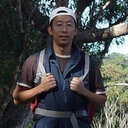[Expressions of neurotrophin factor receptor in spiral ganglion cell of cisplatin-induced ototoxicity].
Schlüsselwörter
Abstrakt
OBJECTIVE
To investigate the effects of high-affinity tyrosine kinase receptors TrkB, TrkC and the low-affinity neurotrophin receptor p75 in spiral ganglion cell (SGC) of cisplatin-induced ototoxicity.
METHODS
The 50 adult Wistar rats were divided randomly into 5 groups received intraperitoneal injection of cisplatin with vary dose. Control group was received equivalent volumes of saline. The group received 1 day intraperitoneal injection was cisplatin treated at a dose of 5 mg/kg and killed at next day. The group received 3 days was cisplatin treated for 3 days at same dose daily and then killed at next day. The group A received 5 days was cisplatin treated for 5 days and killed at next day. The group B received 5 days was cisplatin treated for 5 days and then were sacrificed after 7 days. The change of mRNA level of neurotrophin receptors in cochlear tissue were examined by RT-PCR. The expressing pattern of TrkB, TrkC, P75 in damaged cochlea were study by immunochemistry using antibodies against TrkB, TrkC, P75 protein.
RESULTS
The research data showed the expression of Trk B, Trk C, p75 exhibited in SGC was dynamic along with the administration lasting. The mRNA and protein level of Trk B (x(-) +/- s) at day 1 and 3 after cisplatin treatment were 0.76 +/- 0.06, 88.78 +/- 4.28, 0.82 +/- 0.09 and 91.64 +/- 4.06, with significant difference among those and other groups (P < 0.05). The mRNA and protein level of TrkC at day 1 after cisplatin treatment were 0.80 +/- 0.06 and 89.66 +/- 2.76, with significant difference among that and other groups (P < 0.05). The mRNA and protein level of p75 at the control group and cisplatin treated groups were 0.64 +/- 0.04, 55.16 +/- 3.10, 0.77 +/- 0.04, 78.46 +/- 3.86, 1.01 +/- 0.09, 105.02 +/- 6.61, 1.18 +/- 0.09, 111.10 +/- 6.08, 0.51 +/- 0.04 and 42.74 +/- 5.20, with significant difference among the control group and cisplatin treated groups (P < 0.05).
CONCLUSIONS
The expression of Trk B increased to peak at day 1 - 3 after cisplatin treatment and decreased at day 5 early and following weeks. The expression of Trk C went up to peak at day 1 after cisplatin treatment and went down during subsequently time. P75 kept a trend of continuance increased during the drug treatment and decrease at drug stopped. The expression of Trk B, Trk C and P75 may be involved in cochlear insult with cisplatin-induced. Trk B and Trk C may play an important role in the reparative process of cochlear, especially at early stage of the damage. P75 could promote SGC apoptosis in cisplatin-induced neurotoxicity.



